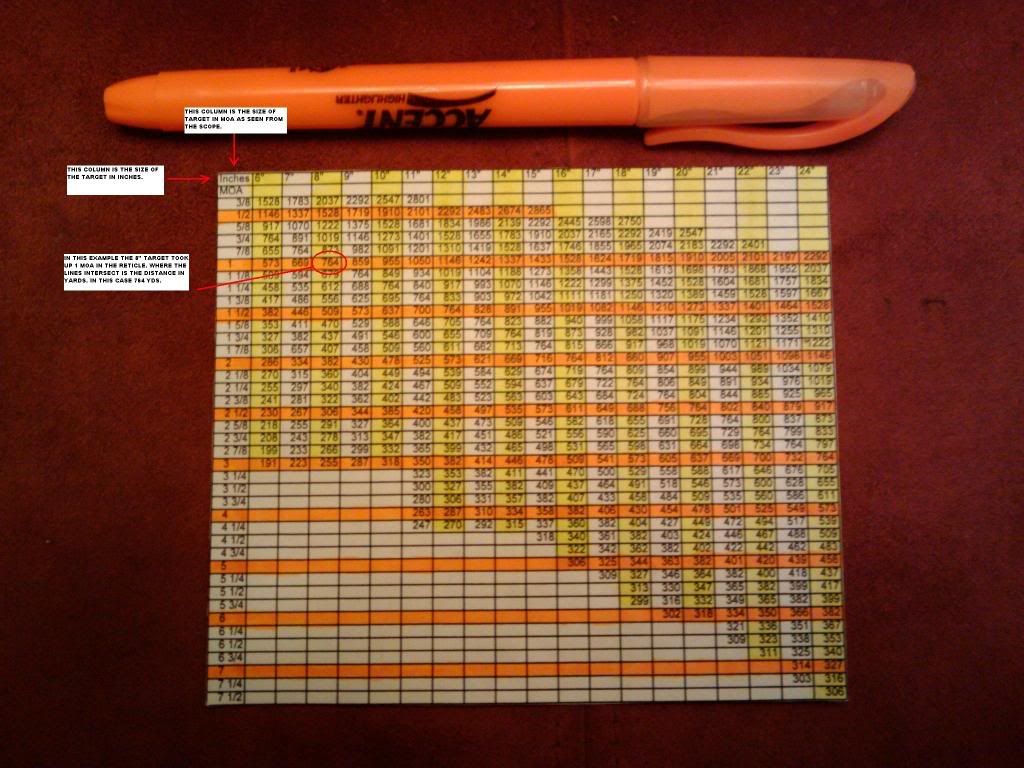After seeing the how much the 'Mil' guys loved there Mil-dot Master i figured why not do a 'Moa Master'. So here it is.
When we practice for long range hunting we like to drive into the woods and select a rock at random and see if we can hit it cold bore. We range, compensate, then fire. We usually laser the target and use our MOA reticles to pick out a target the size of vitals. This chart will make it much easier. I prefer MOA ranging, now it will be easier at competitions to quickly MOA range.
I did some of it in 1/8moa increments for real fine ranging. The chart goes from a 6-24" target. Sorry the text didnt turn out. Far left vertical column is size of target in MOA as it appears in the scope. Top column from left to right is size of target in inches. Where these two intersect is the distance to the target in yards. In this example, the red circle, you see an 8" target is taking up 1 MOA in your scope, the two lines intersect at 764yds. Distance to the target is 764yds. Easy huh?
This card is easy to read and takes up about as much room as my range card.

When we practice for long range hunting we like to drive into the woods and select a rock at random and see if we can hit it cold bore. We range, compensate, then fire. We usually laser the target and use our MOA reticles to pick out a target the size of vitals. This chart will make it much easier. I prefer MOA ranging, now it will be easier at competitions to quickly MOA range.
I did some of it in 1/8moa increments for real fine ranging. The chart goes from a 6-24" target. Sorry the text didnt turn out. Far left vertical column is size of target in MOA as it appears in the scope. Top column from left to right is size of target in inches. Where these two intersect is the distance to the target in yards. In this example, the red circle, you see an 8" target is taking up 1 MOA in your scope, the two lines intersect at 764yds. Distance to the target is 764yds. Easy huh?
This card is easy to read and takes up about as much room as my range card.






